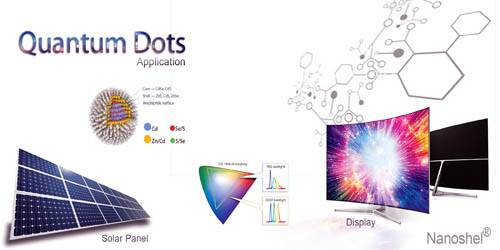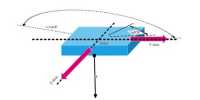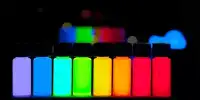Quantum dots (QDs) are human-made nanoscale crystals that can transport electrons. A quantum dot gets its name because it is a tiny spot of material so small that it effectively centers on a point (in other words, it is zero-dimensional). As a result, its internal particles that carry electricity (electrons and holes, which are absent electrons) are trapped (“finite”), and according to the laws of quantum theory clearly define energy levels (think about a ladder), something like separate atoms. Quantum dots semiconductor nanoparticle that illuminates a certain color after being illuminated by light. The color they illuminate depends on the size of the nanoparticle. This capability makes their nano-particle a conduction band in which the electrons move around a material that is free to move and conduct electricity. By the emission of excited electron light, the valence band can release its energy and return. The color of that light depends on the energy difference between the conduction band and the valence band.
Nanoparticles of Semiconductors – Quantum dots were theoretically made in the 1970s and initially made in the early 1980s. In late 1982, American chemist Louis E. Bruce, then working at Bell Laboratories (and now a professor at Columbia University), discovered a similar phenomenon in colloidal solutions (where small particles of one substance are dispersed on the other side; milk is a known example). If the semiconductor particles are made small enough, quantum effects are effective, which limits the energy that can exist electrons and holes (absence of electrons) in the particles. He discovered that with the crystal growth, the wavelengths illuminated by quantum dot changed over time, and it was concluded that the constraint of the electrons was giving the quantum properties of the particles. These two scientists shared the R. W. Wood Prize of the American Optical Society 2006 for their pioneering work.
In the science of physics, nanoscale semiconductor elements strongly limit electron or electron pores. Quantum dots are artificial nanostructures that can achieve many heterogeneous properties depending on their material and size. For example, they can be used as active materials in a single-electronic transistor due to their specific electronic properties. It was demonstrated that the electronic wave functions in quantum dots are similar to those of real atoms. Artificial molecules can be formed by attaching two or more quantum dots, even at room temperature. The use of quantum dots in solar cells can significantly increase their efficiency in electric power generation.
A quantum dot consists of a finite number of conduction band electrons, valence band holes or excitons (of 1-100 order), that is, a finite number of primary electric charges. Larger QDs of 5–6 nm diameter, such as orange or red, emit long wavelengths. Small QDs (2-5 nm) emit small wavelengths, giving colors like blue and green. The lateral dimension can be exceeded 100 nm by quantum dots determined by lithographically patterned gate electrodes or by etching two-dimensional electronic gases in semiconductor heterostructures. The specific colors vary depending on the correct composition of the QD.
Researchers are also working on using quantum dot displays for applications ranging from cell phones to large-screen televisions that will consume less power than current displays. Possible applications of quantum dots include single-electron transistors, solar cells, LEDs, lasers, single-photon sources, second-harmonic generation, quantum computing, and medical imaging. The red, green, and blue colors were used to create the full spectrum, with quantum dots of different sizes in each pixel of the display screen.















